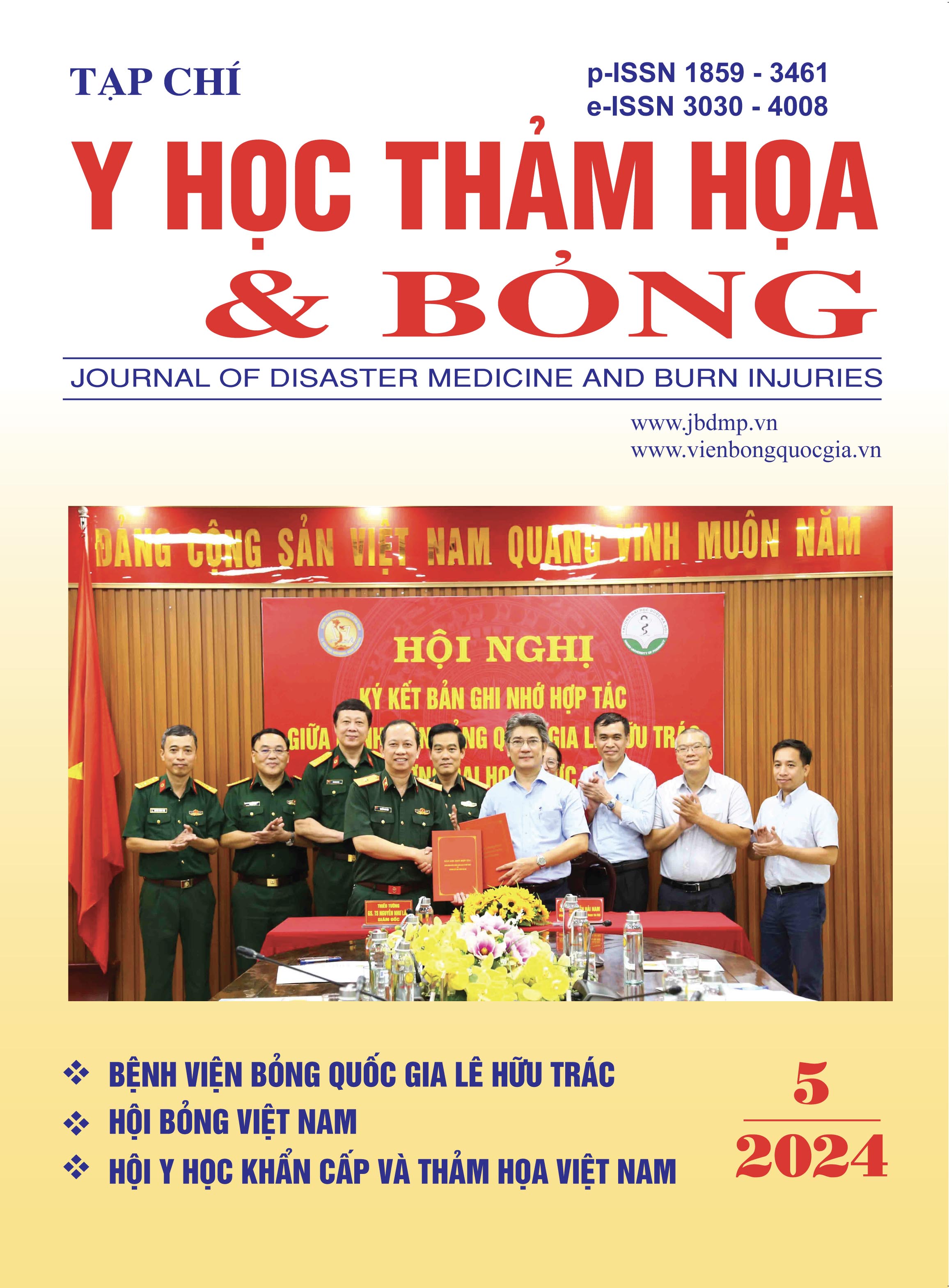Evaluate the effectiveness of mouth splints in preventing scar contracture in the mouth area after burns
Main Article Content
Abstract
Research objectives: Evaluate the effectiveness of mouth splints in preventing scar contracture in the mouth area after burns. Learn about some factors that affect the results of oral rehabilitation after burns.
Subjects and methods: 18 patients with mouth contraction and narrowing after facial burns, who received rehabilitation combined with mouth splint at the Rehabilitation Department - National Burn Hospital from April 2023 to April 2024. A prospective study with longitudinal follow-up before and 6 months after discharge on improvement in oral range of motion, pain level and scar status.
Results: After intervention with the mouth splint, the vertical and horizontal range of motion of the patients' mouths increased from 24.22 ± 6.57mm and 40.00 ± 4.14 mm to 35.27 ± 9.64mm and 47.44 ± 4.87mm with p < 0.001. The mouth range of motion of the majority of patients returned to normal (61.1%), while 16.7% of patients had moderate mouth contracture and 16.7% had severe mouth contracture. Pain levels and scar condition also improved. The VAS pain score decreased from 4.11 ± 0.83 to 1.94 ± 1.05 with p < 0.001. The Vancouver scar score decreased from 7.78 ± 2.39 to 5.78 ± 2.79, p < 0.01. Earlier intervention time resulted in an increased mouth range of motion. The difference in horizontal mouth range of motion 6 months after discharge for the group of patients who received intervention <30 days after the burn (10.28 ± 5.93mm) was higher compared to the group who received intervention ≥30 days after the burn (5.63 ± 3.58mm) with p < 0.05.
In the group of patients with superficial burns, after three months of study, vertical and horizontal mouth range of motion returned to normal; pain sensation was eliminated; scar tissue became similar to the healthy skin base and maintained these results up to six months afterward. Certain factors affecting the outcome of oral rehabilitation after burns, such as burn depth, timing of intervention, and the degree of oral constriction before the study, were also discussed.
Conclusion: The improved dynamic mouth splint is effective in preventing contracture and mouth narrowing after burns. The time to start rehabilitation intervention and the depth of burns around the mouth affect the results of post-burn oral rehabilitation.
Article Details
Keywords
Burn, rehabilitation, mouth splint
References
2. Wei Y., Li-Tsang C. W. P. (2017), “Rehabilitation of Patients with Facial Burn Injury: Principles and Practice Experiences”, JSM Burns Trauma 2(3): 1023.
3. Clayton N. A. et al. (2015), “Full thickness facial burns: Outcomes following orofacial rehabilitation. Burns (2015); http://dx.doi.org/10.1016/ j.burns.2015.04.003.
4. Conine T. A., Carlow D. L., Stevenson-Moore P. (1989), “The Vancouver microstomia orthosis”, J Prosthet Dent; 61: 476-83.
5. Alami M., Nodehi D., Najaran N. T., et al. (2020), “Post-Burn Microstomia Prevention: Application of a New Therapeutic Device”, J Dent Mater Tech 2020; 9(4): 171-175.
6. Thakur A., Chauhan D., Singla N. K., et al. (2020), “Prosthetic Management of Microstomia with Customized Dynamic Splint”, Int J Prosthodont., 2020 May/Jun;33(3): 347-353.


